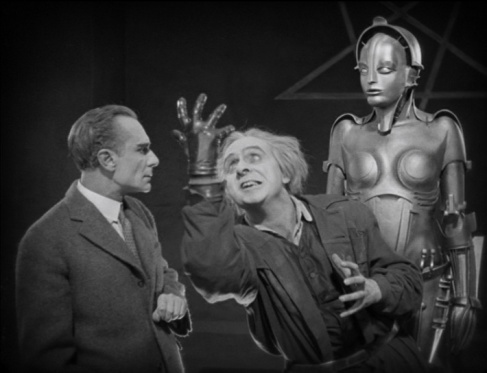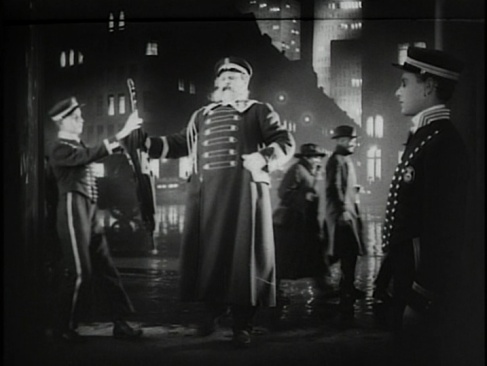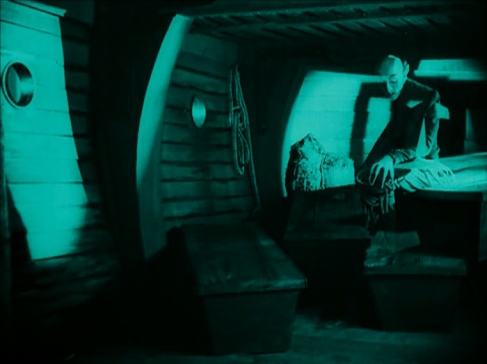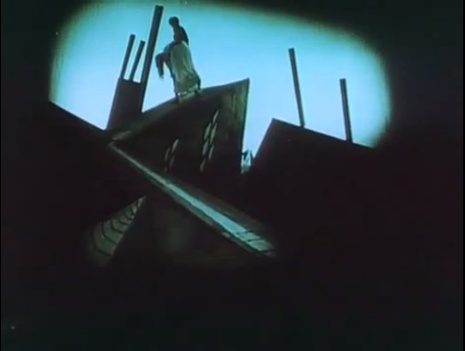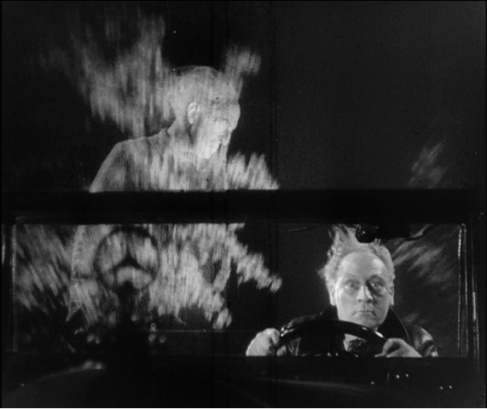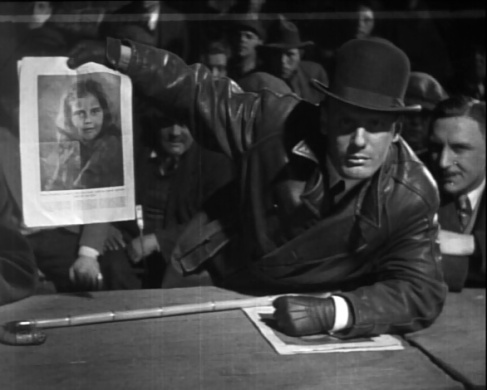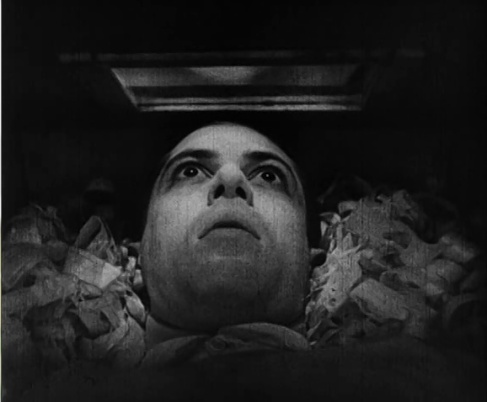
Dead or alive. Allan Grey, or perhaps just a dream self, stares through a coffin window. Such stark lighting and inventive camera angles work to create a nightmare world of danger and confusion in Carl Theodor Dreyer’s Vampyr.
If there is a difference between horror and suspense, it might might be said to come down to a question of opacity. Horror shows its hand; suspense keeps it hid but implies strongly. But perhaps more importantly, suspense isn’t necessarily meant to scare so much as to create a mood, an atmosphere in which anything — probably the worst anything — can happen. Despite featuring an undead blood sucker, a malevolent doctor, and a one-legged murderer, Carl Theodor Dreyer’s Vampyr (1932) can’t really be said to be a horror film. It does, however, create a morbidly grim atmosphere that also manages to playfully tap into the realm of dreams and nightmares. The film is awash in strange lighting schemes, misbehaving shadows, off-kilter angles, and unorthodox performances, the sum of which create a picture that engages even as it strains comprehension. Vampyr is a movie of details more than a movie of scares, but its deliberate pace and bravura camerawork create a compact world of hypnotic beauty and grimy tension. (73 min.) Continue reading
